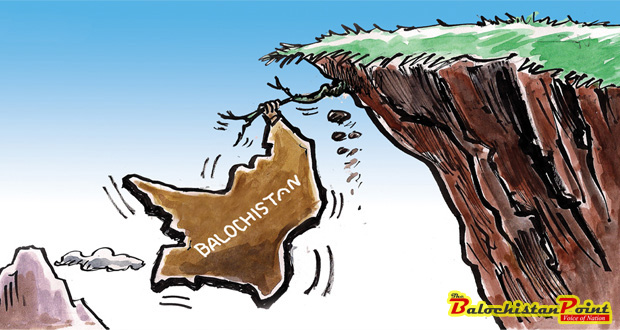Habibullah Khan Nasar
Does well-directed, thoroughly prioritized, transparent, and efficient development model constitute an important component of ‘lean and clean’ governance? There should be no denying of this perspective. Whereas, to everyone’s ill-fortune and discredit, the design and saga of development in Balochistan do not reflect what an ideal or at least workable model of development may desire.
Like Siamese twins, bad governance and faulty development are thoroughly intertwined. Bad governance unfavorably affects development activity. Further, its first casualty is a compromised, ill-directed and inconsequential development paradigm. Though development do takes place, if the official records are referred to, in almost all the nocks and corners of the province, but to the bare wonder of many, it is less visible to the eyes and almost incomprehensible to the minds of those who are capable enough to see things as these factually pose.
As a commonplace annual practice, the designated bureaus hailing from the ‘civilian establishment’ of the province compile and publicize plans and the ensuing rosy achievements of the provincial government in terms of its development vision and delivery. The official record looks so alluring and appealing that has to be kissed under an extreme emotion of esteem and love for the spelt out breakthroughs. But at the same time, what perturbs is that despite all the ‘genuine and sincere undertakings’ on the part of the successive governments of both past and present – and let the pessimists also add ‘future’ too – people do not see outcomes shaped into concrete and tangible forms. To a sensible and a rightly-thinking person the lack and criminal absence of the positive impacts of the development activity are alarming and depressing. Hence one needs not quote various data from both independent and dependent (Government) sources reflecting how backward and underdeveloped we are in multiple domains of life.
Here it has to be noted that by development we mean a positive, measurable and tangible changes in the standard of living and attitude of the people. I wish my narrative of development should not be confused with the traditional concepts of development activities that are ‘carefully and systematically engineered and executed in the constancies of the ‘development masters’, e.g. inaugurating a paved street, completing a sanitation project for street dwellers, sponsoring hand-picked and ‘head-hunted talented and deserving school-college-going boys and girls for quality education – please do not delete photo session element from the aforementioned developmental breakthroughs – and beautification projects that may not exclude erecting a fake missile at the main square (say Chowk) of the town or city of the constancy so that people may feel safe and secure in the abler hands of their fortune-setters.
The point is that ignoring today’s development will definitely cost you immeasurably in the future and in multiple contours, if the recent history of the country is a valid, authentic and resourceful example. The example of FATA appears to be much pertinent. It is an open secret that FATA has been one of the most underdeveloped and backward regions in the whole country in terms of all kinds of infrastructures: physical, social, administrative, political and economic. Does any other modern state afford or tolerate swathes of lands within its national boundaries identical to FATA’s? No state can make headway by developing one region at the cost of the other. The simple reason is that the excluded, isolated and deprived regions often erupt like volcano. One of the characteristics of the volcanoes is that nobody and no device can predict its eruption time and ensuing consequences before its actual outburst.
The criminal and nonsensical neglect of the region (FATA) cost us immensely. The multiple administrative, political, economic and social vacuums, created by the successive parochial and lethargic governments, were later cemented by the obscurantist and demagogues of most horrible profiles. The education vacuum was filled by the propaganda and brainwashing industries and institutions, which were established and nursed so effectively that influenced millions of the people in the belt.
The political and administrative vacuums were sealed by the people who neither represented the ethos of native people nor recognized the constitution of the country. This entails an interesting case study that encapsulates the intertwined coordination between development, governance and violence. The hypothesis can be tested to the level of authentic and substantiated proof by an able scholar. He or she will definitely come to the conclusion that the vacuums are always filled, but mostly by the bad elements.
Now, do Balochistan make any resemblance with the region of FATA? No, but a recent study showed that the learning outcomes of the school-going children in Balochistan is lower than that of the children hailing from FATA. What does it mean? This single indicator of primary education speaks aloud and nothing afresh. The single indicator picked from the important sector of primary education sufficiently pinpoints the direction of the vehicle of development in Balochistan. In short, ignoring today’s children’s development is equal to compromising the future development of the province.
Published in The Balochistan Point on January 17, 2016
Disclaimer: Views expressed in this article are those of the author and The Balochistan Point not necessarily agrees with them.
 Balochistan Point Voice of Nation
Balochistan Point Voice of Nation




